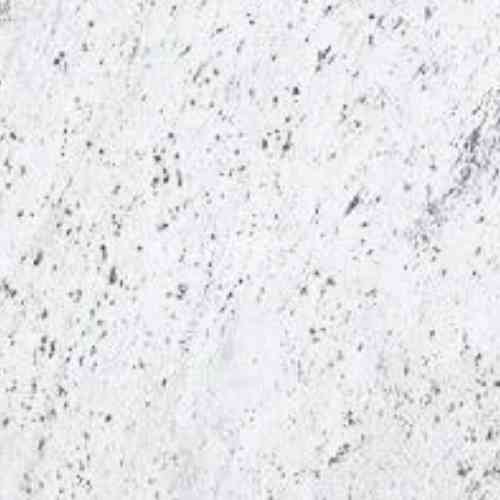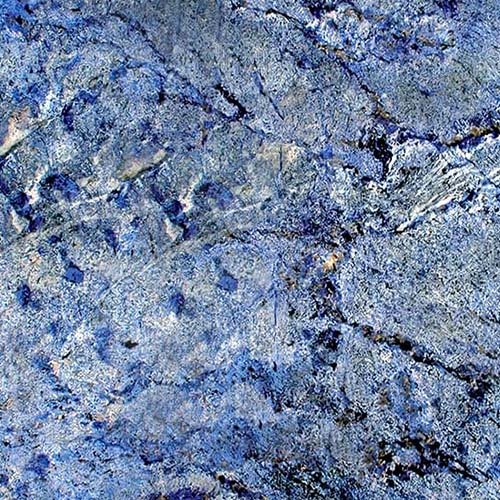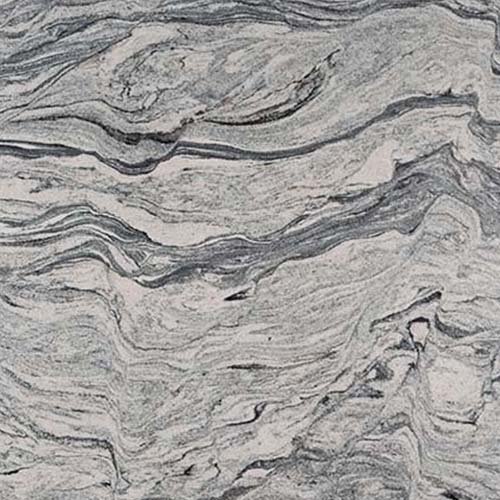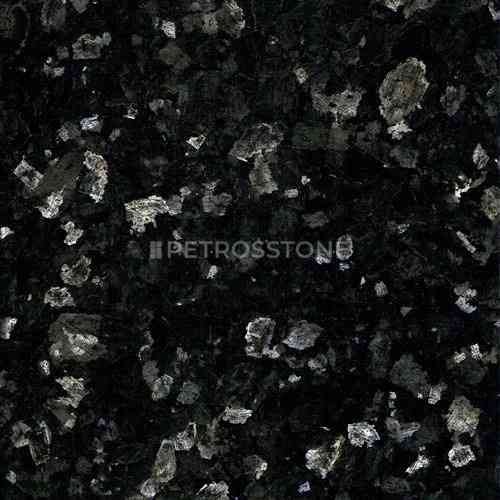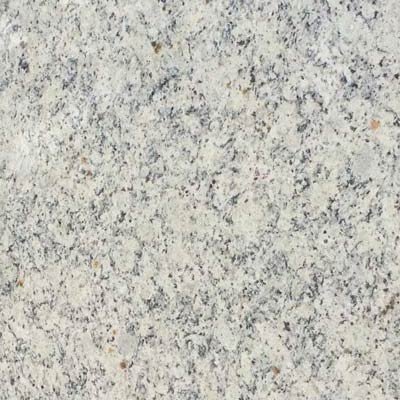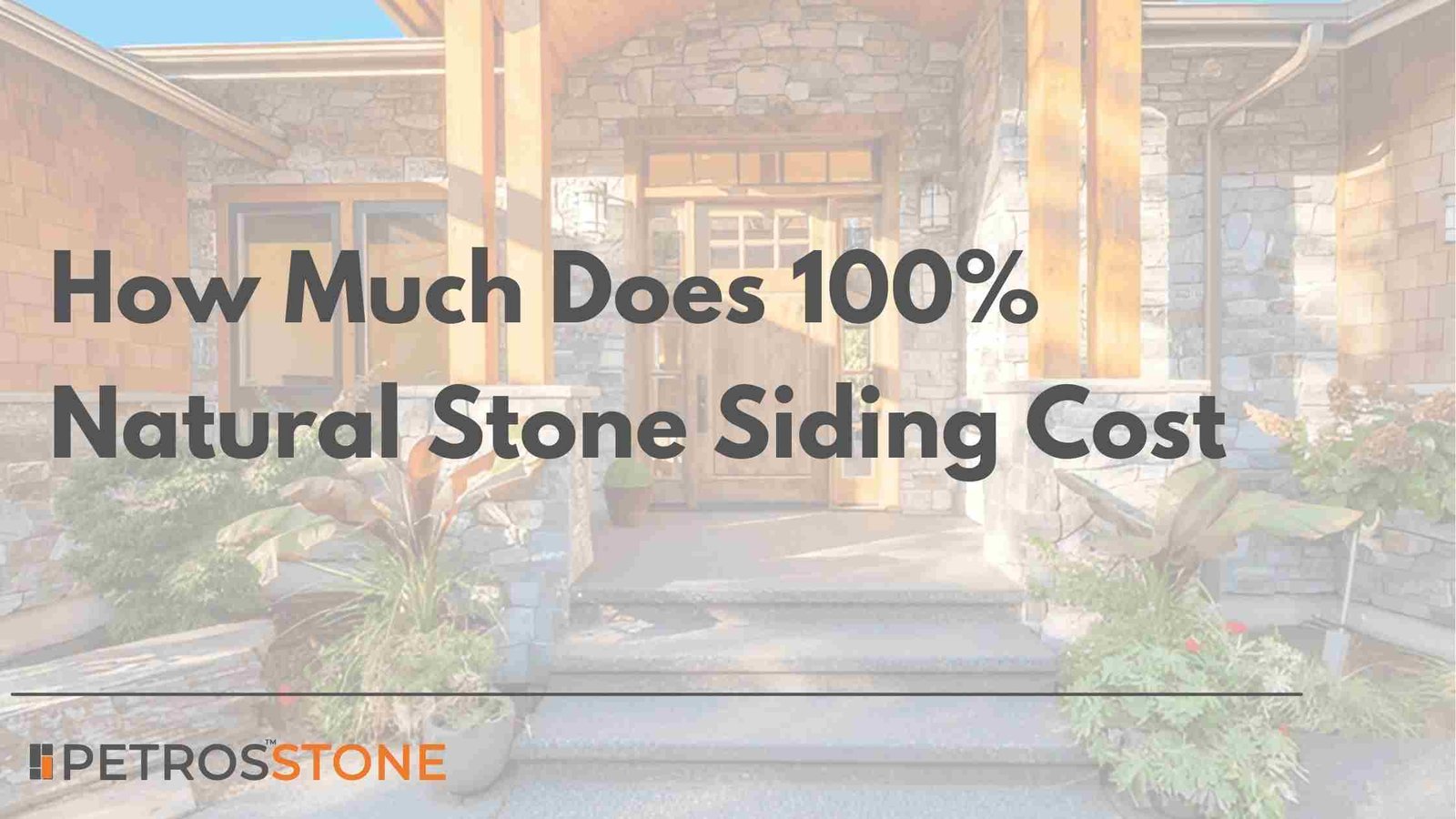
Natural stone facades always convey a classic look that few materials can match. There’s something undeniably timeless about their appeal on a building’s exterior. It has a richness, texture, and heft that is hard to duplicate; simply, it looks amazing. That being said, many homeowners and designers freeze up at the mention of one thing: price. What can you expect to pay for a 100% natural stone façade? The answer is here! The average cost would range between $5 and $35 per sq. ft. with installation.
Stone Types (Characteristics, Price, and Best Use)
| Stone Type | Appearance | Durability | Price (material only) | Best For |
| Granite | Speckled, dense, and generally darker with a polished exterior. | Very High – Weathers well, heat-resistant, and scratch-resistant. | $0.75 – $2.58 per sq. ft. | Modern designs, high-end homes, or commercial buildings |
| Limestone | Light beige, cream, or grey, with a smooth texture. | Good – Relatively soft but durable, easy to carve. | $0.29 – $2.13 per sq. ft. | Traditional, colonial, or Mediterranean-style homes |
| Slate | Dark grey to black with a layered texture. | Excellent – Great for wet or cold climates. | $0.69 – $1.62 per sq. ft. | Rustic or minimalist facades |
| Sandstone | Warm earth tones—tan, gold, red. | Fair – More porous but still long-lasting. | $0.46 –$2.56 per sq. ft. | Southwestern or farmhouse-style homes |
| Marble | White or grey polished stone with bold veining. | Strong but may stain or etch if unsealed. | $0.63 – $17.12 per sq. ft. | High-end residential or luxury commercial buildings |
In this article, we break down the details, not just the price, but the values, the comparisons, and ways to make sure you are getting the most value for your natural stone siding investment.
- What is Natural Stone Siding?
- Stone Veneer Vs Stone Siding
- Pros and Cons of Stone Siding
- Pros and Cons of Veneer Siding
- Types of Stone Façade
- Using Raw Natural Stone
- Using Processed Slabs With Dry Cladding
- Design And Approximate Cost For Each
- How to Calculate the Cost of a Façade For Yourself (DIY)
- Factors That Affect the Cost of Natural Stone Siding
- Tips To Save Cost
- How To Buy Stone Directly from the Factory To Save Cost
- FAQs
- Key Takeaways
What is Natural Stone Siding?
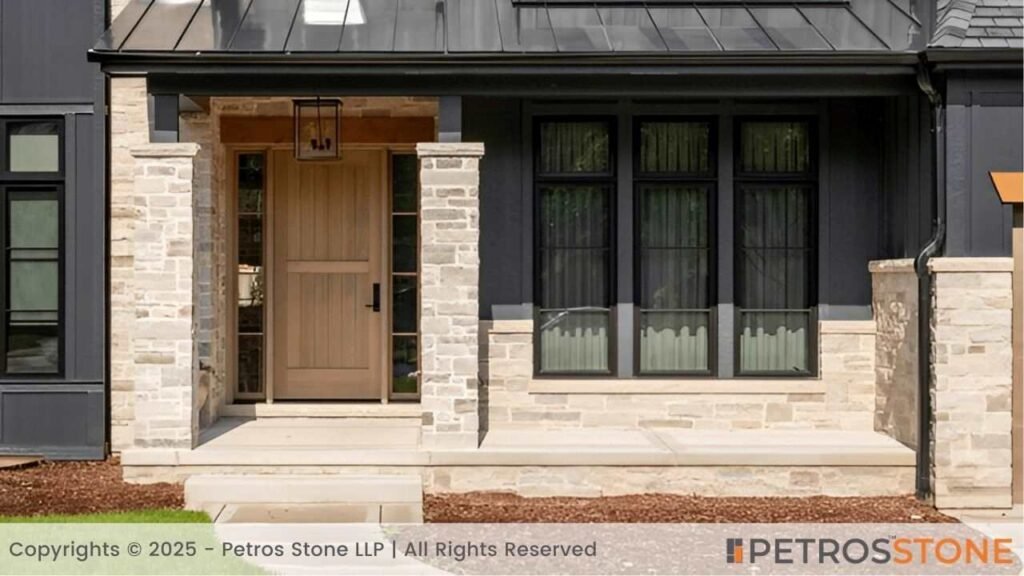
Natural Stone Siding refers to the application of stone to a building’s exterior walls. This is basically a solid stone, usually fashioned into slabs or blocks to be installed externally on a home or any other building. It is heavy and durable, and in almost all cases requires the assistance of skilled masons for correct installation. The prices are reflective and based on labor, the weight of the material, as well as the effort to carry and install it.
Stone Veneer Vs Stone Siding
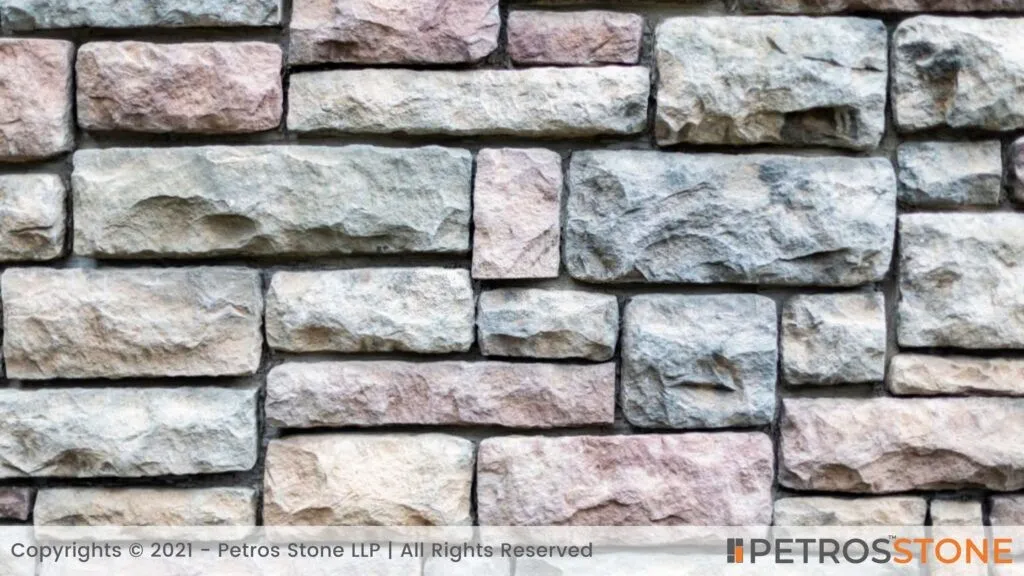

Stone siding, as well as stone veneer siding, are both types of decorative shields used in exterior and interior walls of a building. The key difference lies in the term “siding,” which refers to the exterior application, while “veneer” can describe both natural stone and manufactured stone options used for this purpose. Stone Veneer comes in two variants: natural thin stone and manufactured (or faux) stone. Both attempt to copy the look of full stone siding but are thinner, lighter, and easier to install. Therefore, they tend to be less expensive, especially in terms of labor.
Which one should you choose?
If you are after authenticity, permanence, and long-term value, natural stone is the way to go. But, if you want a similar look for a smaller budget, veneer can be a great alternative.
Pros and Cons of Stone Siding
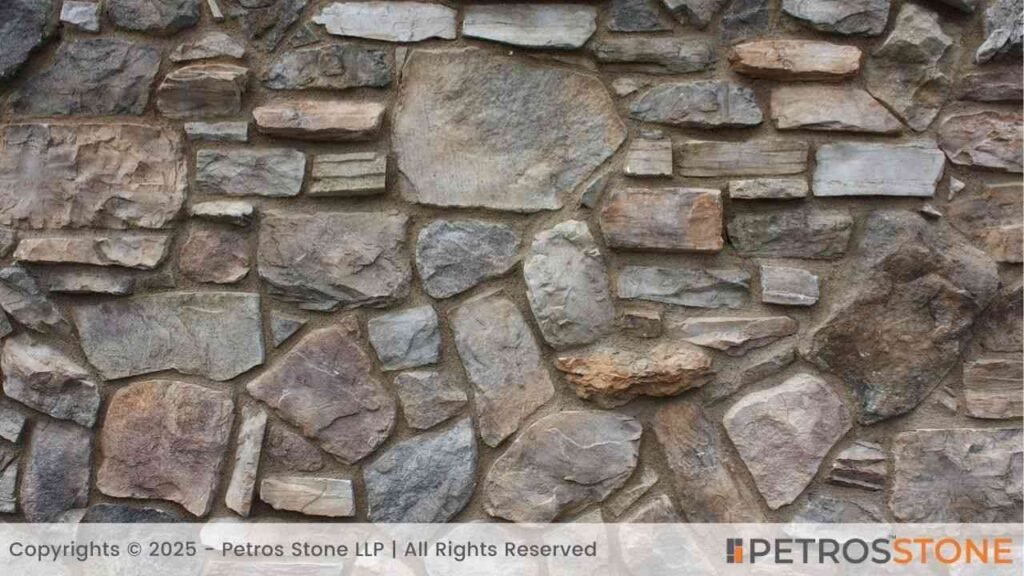
Pros
- Extremely durable and long-lasting
- Fire-resistant
- Weather-resistant
- Natural and elegant appearance
- Low maintenance
- Adds value to property
Cons
- Expensive material and installation
- Heavy and requires strong structural support
- Difficult and time-consuming to install
- Limited color options (natural tones only)
Pros and Cons of Veneer Siding
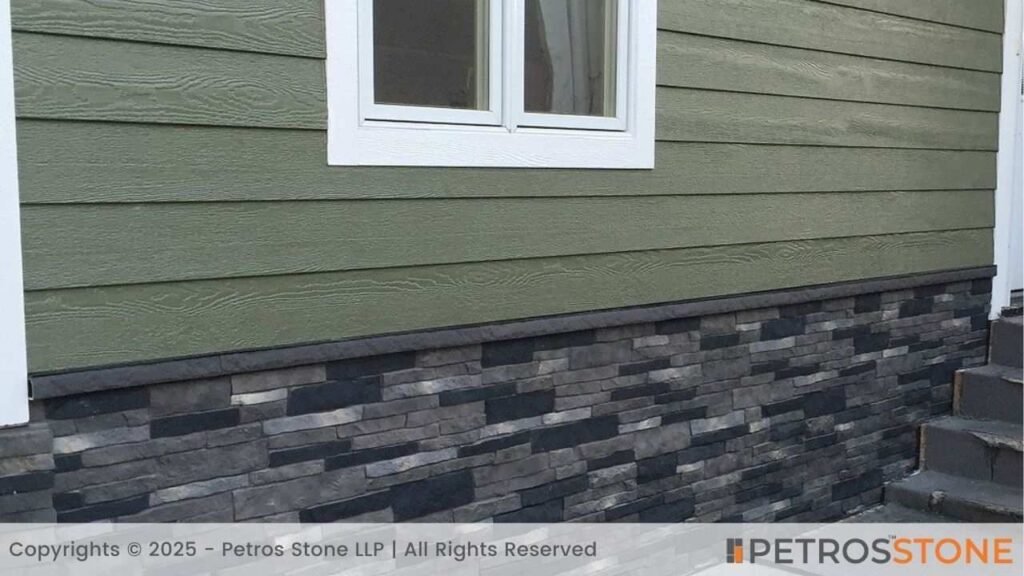
Pros
- More affordable than natural stone
- Lighter weight – easier to install
- Wide variety of colors and styles
- Can mimic natural stone appearance
- Easier to transport and handle
- Good insulation properties
Cons
- Less durable than real stone
- Can be prone to moisture damage if not installed correctly
- Requires occasional maintenance
Types of Stone Façade

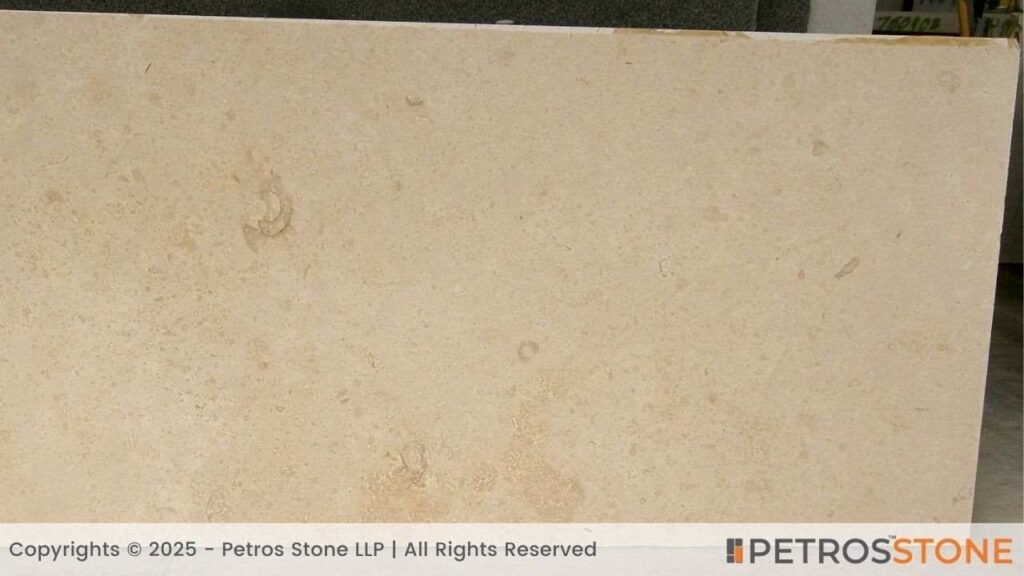
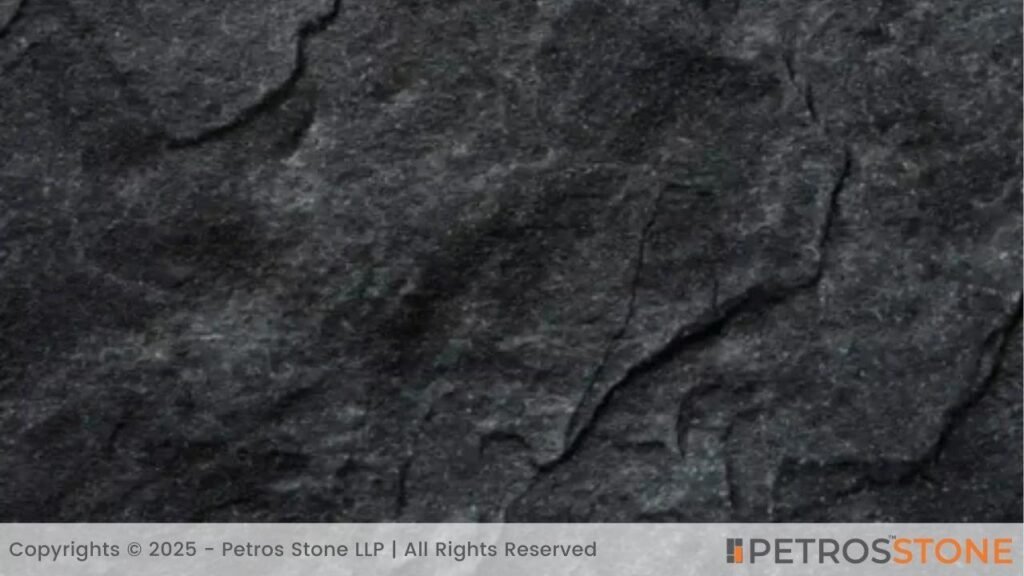
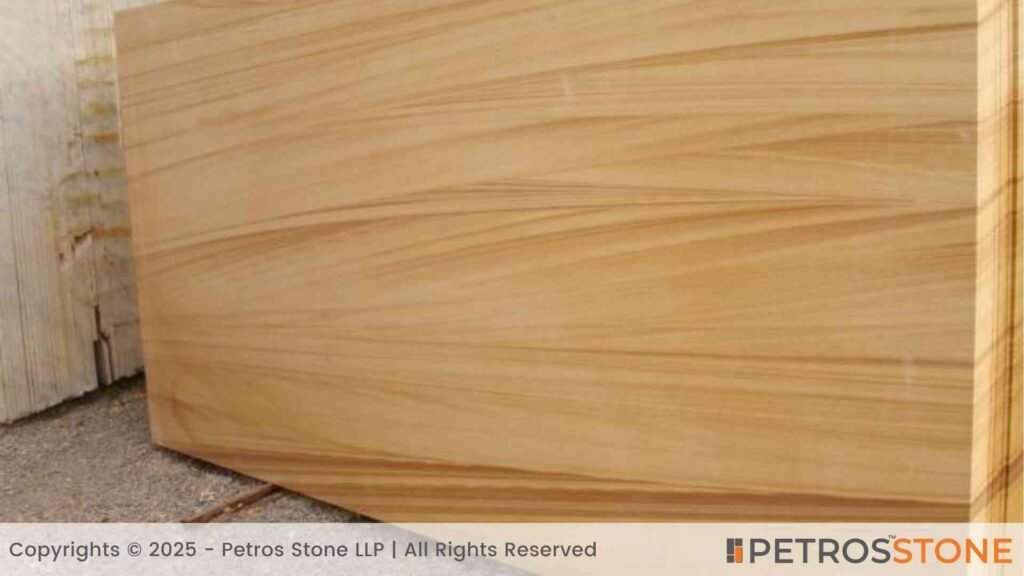
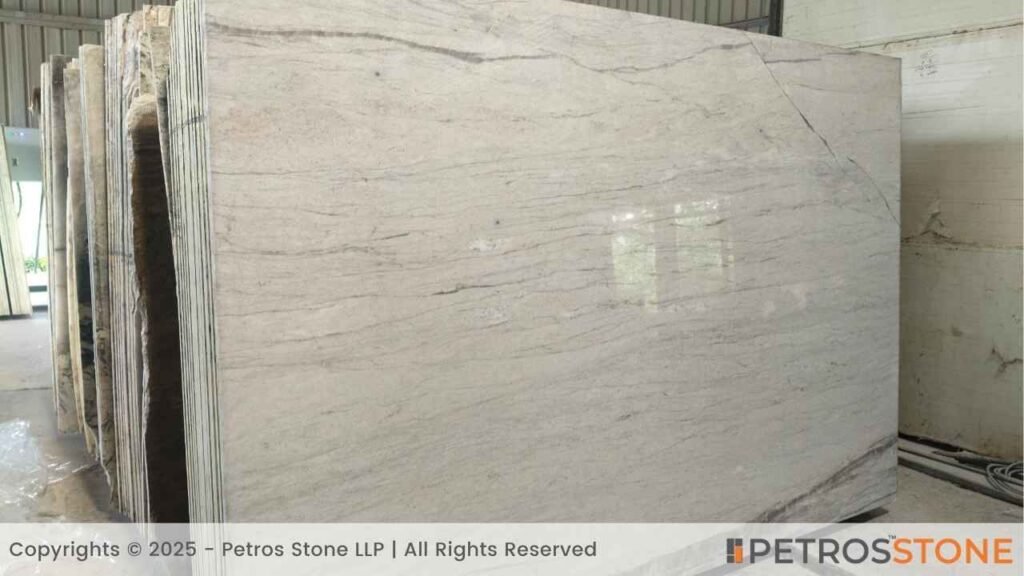
When we refer to “natural stone,” we are not talking about one type of material; rather, we are referring to an entire family of stone types, each with its own characteristics, price, and best use. Here are a few of the more common types:
Stone Types (Characteristics, Price, and Best Use)
| Stone Type | Appearance | Durability | Price (material only) | Best For |
| Granite | Speckled, dense, and generally darker with a polished exterior. | Very High – Weathers well, heat-resistant, and scratch-resistant. | $0.75 – $2.58 per sq. ft. (material only) | Modern designs, high-end homes, or commercial buildings |
| Limestone | Light beige, cream, or grey, with a smooth texture. | Good – Relatively soft but durable, easy to carve. | $0.29 – $2.13 per sq. ft. | Traditional, colonial, or Mediterranean-style homes |
| Slate | Dark grey to black with a layered texture. | Excellent – Great for wet or cold climates. | $0.69 – $1.62 per sq. ft. | Rustic or minimalist facades |
| Sandstone | Warm earth tones—tan, gold, red. | Fair – More porous but still long-lasting. | $0.46 –$2.56 per sq. ft. | Southwestern or farmhouse-style homes |
| Marble | White or grey polished stone with bold veining. | Strong but may stain or etch if unsealed. | $0.63 – $17.12 per sq. ft. | High-end residential or luxury commercial buildings |
Using Raw Natural Stone
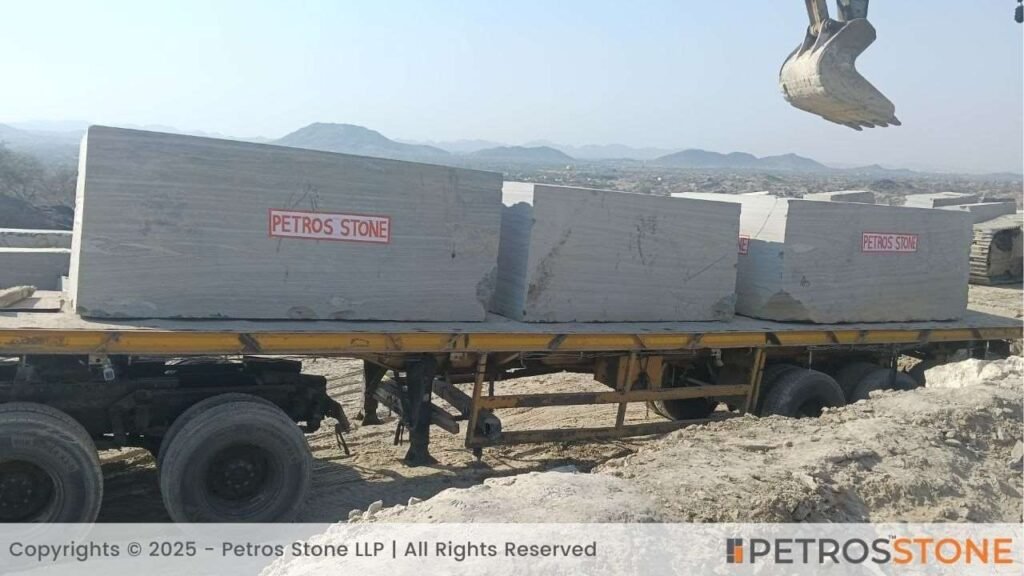
Raw natural stone is cut straight from quarries and shaped into blocks or slabs for installation. It gives a rugged, timeless look and unmatched durability, often lasting for decades. However, it is heavy and requires skilled masons, and that makes labor costs high. On average, raw stone siding costs $5–$35 per sq. ft. (materials + installation).
Using Processed Slabs With Dry Cladding
Processed slabs are cut and polished to precise sizes, then fixed with dry cladding systems using mechanical anchors instead of mortar. This modern method is cleaner, faster, and easier to maintain. It also improves ventilation and insulation. The cost usually ranges from $3.50–$30 per sq. ft. (materials + installation).
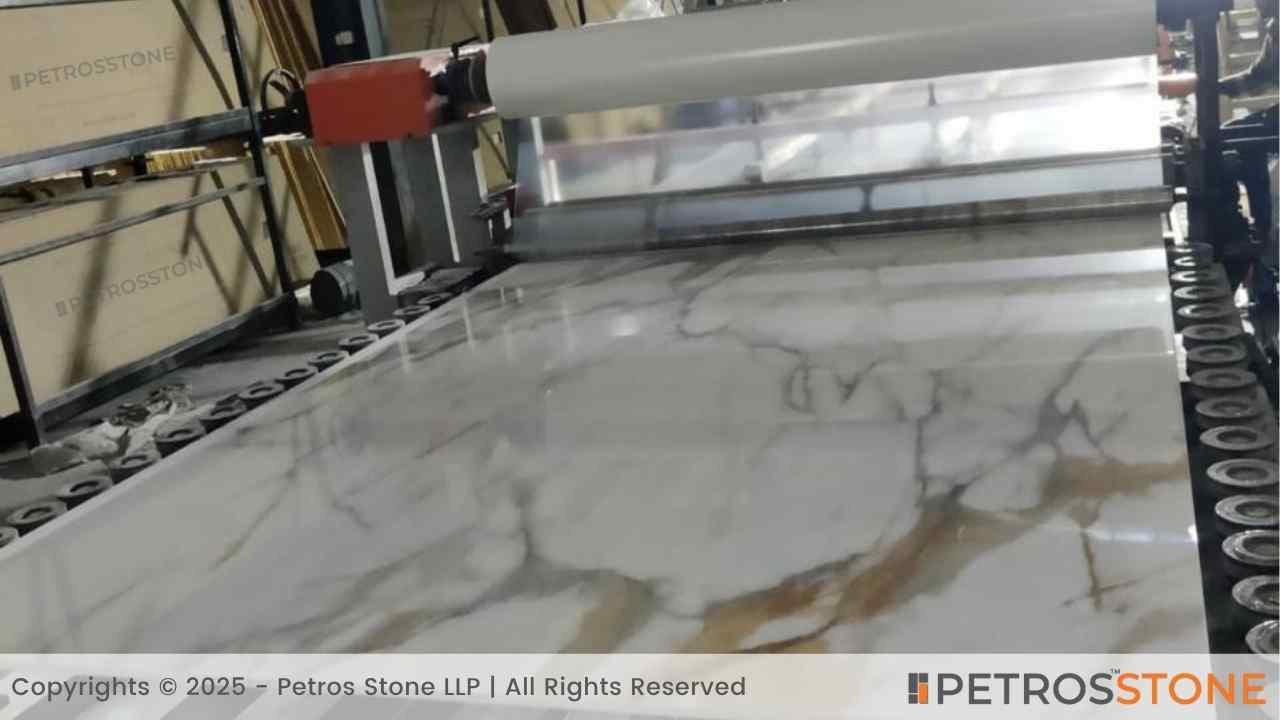
Design And Approximate Cost For Each

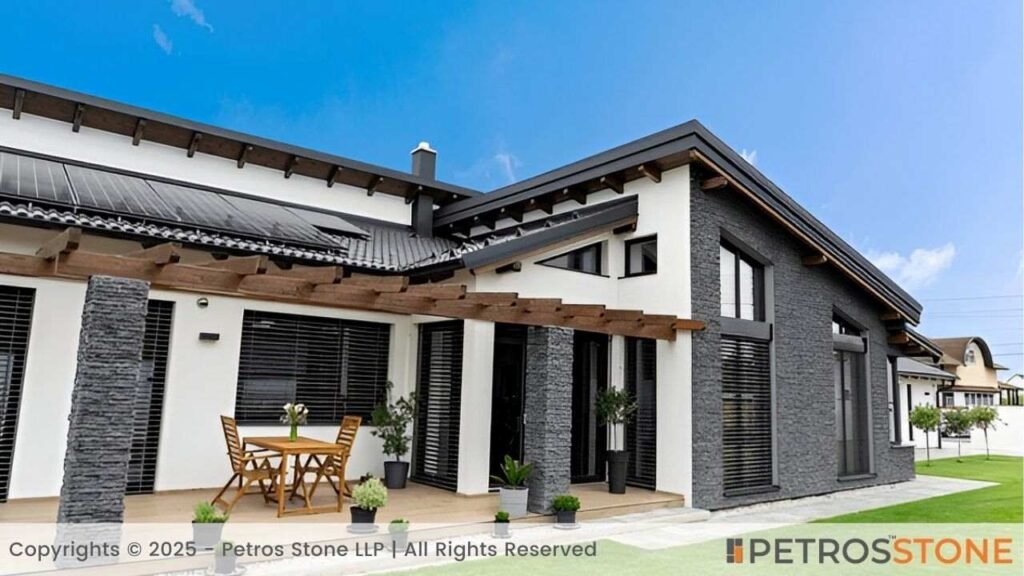
The final cost of your stone siding will depend not just on the material, but also on the style and complexity of your design. Here are a few popular choices and what they might cost:
Stone Facade Design Styles with Approximate Costs
| Design Style | Stone Type | Approximate Cost (USD / Sq. Ft.) | Notes |
|---|---|---|---|
| Modern Vertical Facade | Slate Panels | $40 – $70 | Slate is durable and ideal for clean vertical designs; dry cladding often used. |
| Classic Colonial | Limestone Blocks | $30 – $55 | Relatively soft and traditional; price depends on block thickness and finish. |
| Rustic Farmhouse | Mixed Fieldstone | $35 – $65 | Uneven shapes require more labor; fieldstone gives a raw, aged look. |
| Mediterranean | Sandstone Arches | $25 – $50 | More affordable, but arches need expert shaping and higher labor cost. |
| Luxury Estate | Marble Panels | $60 – $90 | Polished marble with dry cladding systems; high-end and labor-intensive. |
Note: These estimates are for full façade applications on an average two-story home and include material and labor but not foundation work or transport costs.
How to Calculate the Cost of a Façade For Yourself (DIY)

Want to do a rough estimate for your project before calling contractors? Here’s a simple step-by-step guide:
Measure the Surface Area
Measure the height and width of each exterior wall, then multiply to get the square footage. Subtract areas like windows and doors.
Choose Your Stone
Decide on the stone type, and this will give you the price per square foot.
Add Installation Costs
Professional installation for natural stone can range from $5 to $35 per square foot, depending on complexity.
Account for Extras
Don’t forget shipping, sealing, mortar, trims, and accessories.
Example Estimate:
Area: 1,000 sq. ft.
Stone: Limestone at $2/sq. ft. = $2,000
Labor: $3/sq. ft. = $3,000
Extras (transport, sealing): $2,000
Total Project Cost: $7,000
Factors That Affect the Cost of Natural Stone Siding
Natural stone siding comes with a whole bunch of expenses apart from just the type of stone being considered. Even if the stones themselves may be the same, many other factors cause a lot of fluctuation in the total cost. Here’s a quick rundown of factors that will increase or decrease those expenses:
1. Source Location

It’s important to consider where your stones are coming from.
While local stones may seem economical at first glance, imported stones can often turn out to be more cost-effective in the long run. Thanks to global sourcing and large-scale shipping logistics, many international suppliers can offer high-quality materials at competitive prices. In fact, even with transport costs, imported stones—especially from countries with advanced quarrying and processing infrastructure—can be more affordable than locally sourced ones, which might involve limited supply or higher extraction costs.
2. Finish Type
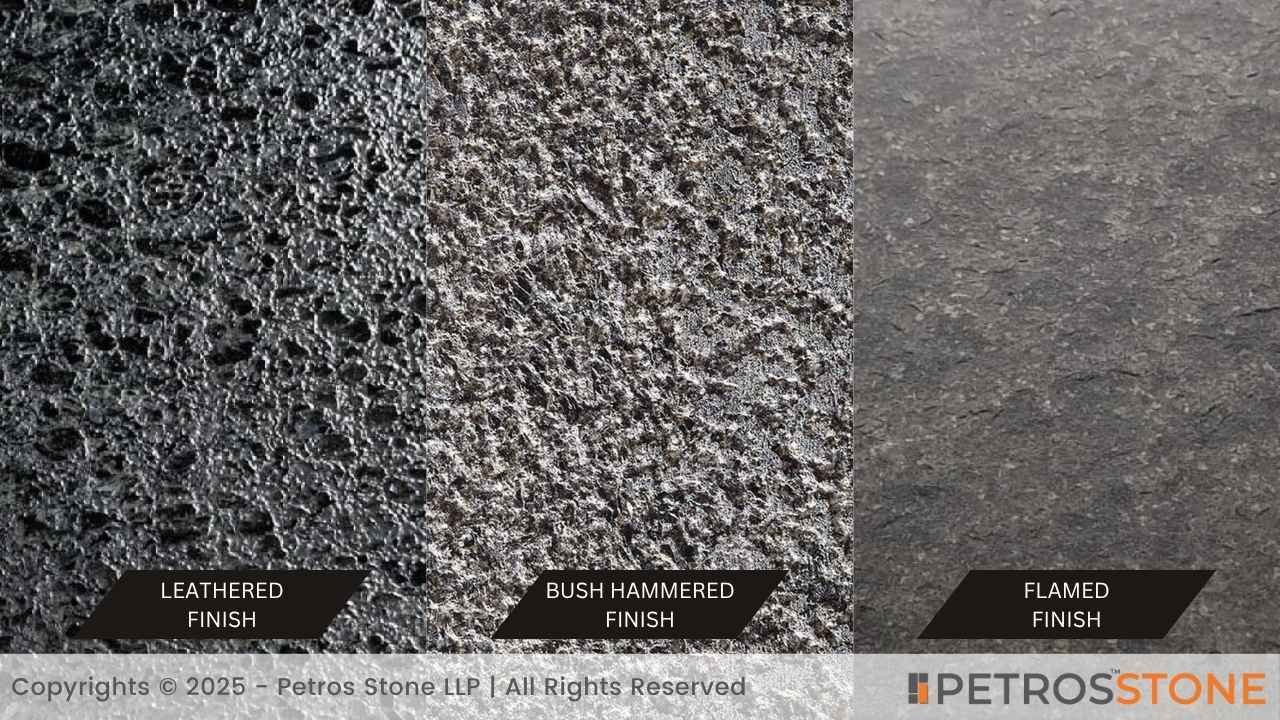
Not all stone finishes are created equal—and neither are their prices.
Ones that are a bit more natural in appearance, such as split-face or tumbled finishes, are usually cheaper. On the contrary, stones that are polished, honed, or custom-cut to a variety of shapes and sizes require more time and effort in their preparation, and this burden of labor is passed on to the customer. So, if you are looking for something that is slick and luxurious, just know it’ll likely cost a bit more.
3. Building Design

Because of the complex shape and structure of your building, the installation could become more complicated—and expensive.
With curved walls and many corners or an uneven exterior surface to work with, it is going to take workers more time and accuracy in fitting the stones. The same would be true for multi-story homes, where scaffolding or certain apparatus costing money might have to be used. So much more time and labor altogether because of complicated layouts.
4. Contractor Experience
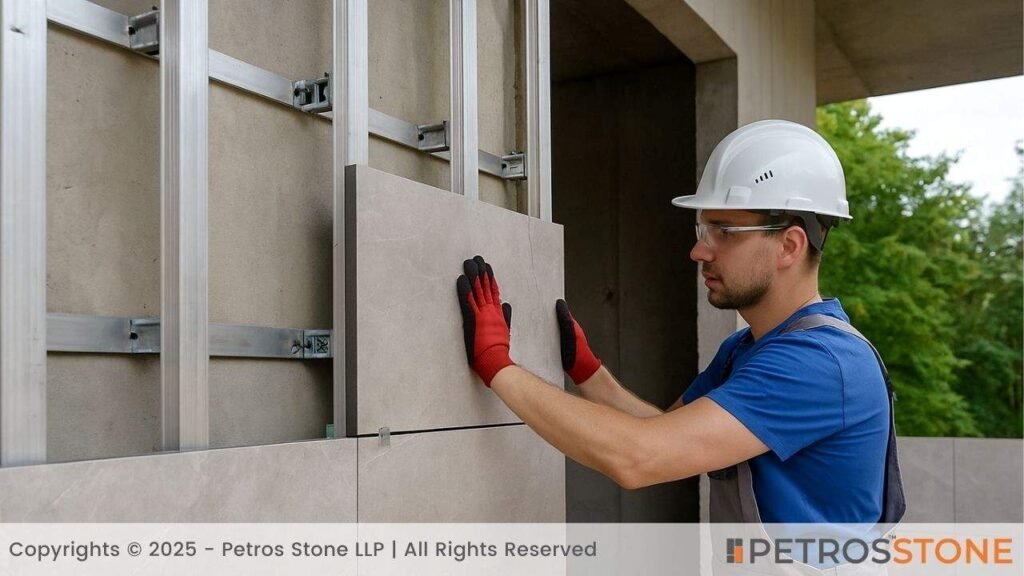
Skilled labor often comes at a higher rate—but it’s generally worth it.
Stone masons with good experience and knowledge may charge a higher price in the beginning, but they work efficiently and save you from making costly errors. Poor workmanship can cause all sorts of problems, and that can even be worse, resulting in additional costs later on, e.g., uneven stones or structural issues. So, always pay to hire a more experienced professional.
5. Stone Thickness
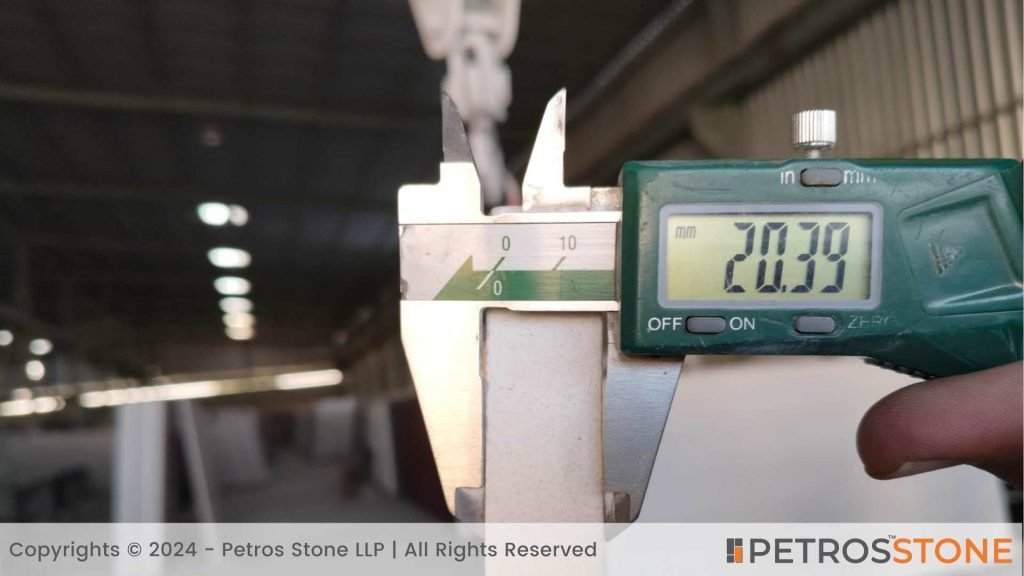
The thickness of the stone impacts both material and installation costs.
Full-bed stone is thick and heavy, which not only makes it more durable but also more expensive and harder to install. It takes more time, stronger support, and extra labor. Meanwhile, thin stone veneer, on the other hand, is lighter and quicker to work with, which usually brings the cost down. So, it is a great option if you are looking to get the stone look without the heavy price tag.
Tips To Save Cost

Here are a few practical ways to cut costs without compromising too much on quality:
1. Use Stone as an Accent
Instead of covering the entire home, use natural stone only on key features like the entrance, chimney, or base of the home.
2. Mix Materials
You can pair stone with siding, stucco, or wood for a modern mixed-material look. Yes, it is trendy and budget-friendly too.
3. Go for Thin Veneer Stone
If you still want natural stone but can’t afford full-thickness blocks, thin veneer is a great middle ground.
4. Shop Smart
Buy offcuts, surplus lots, or discontinued styles from suppliers or reclamation yards. For more options, you can check out the gallery of Petros Stone.
5. Do Prep Work Yourself
Site cleanup, removing old siding, or prepping the surface can often be done without a pro, but only if you are careful.
How To Buy Stone Directly from the Factory To Save Cost
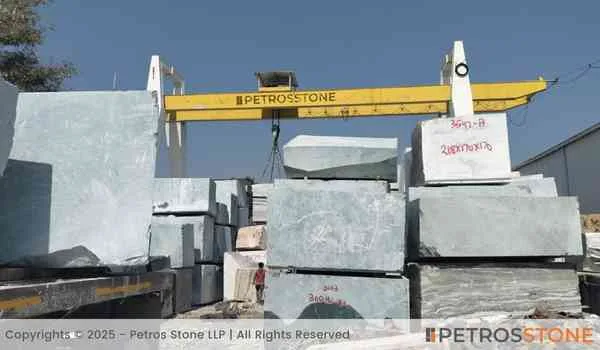
Cutting out the middlemen can significantly reduce your stone costs. Here’s how to do it:
Find Local Quarries
Look for natural stone quarries within your region because many sell directly to the public or to contractors at wholesale prices.
Visit in Person
You can simply make your way to the yard, check the quality, and negotiate pricing face-to-face.
Ask About Bulk Deals or Blemished Stock
Imperfect pieces or overstock can be sold at a steep discount. So, calculate beforehand the amount of stone your project requires and buy it all at once.
Plan for Shipping
Stone is heavy, and shipping adds up fast. So, consider picking up the material yourself if possible.
Request Samples
Always get a few sample stones before committing to a large order.
Apart from factories, you can import your chosen one from India or the USA. And, if this is also not your cup of tea, you can directly connect with the Petros Stones. There are innumerable options available to match your preferences.
Need more details? Contact us now.
FAQs
What can I anticipate the overall cost of stone veneer to be?
The overall cost (material) is $3.5 to $35 per square foot of wall space. For a wall of 1,000 sq. ft. this means the cost could be approx. $3,500 – $35,000+.
What does natural stone cost?
Natural stone costs between $0.61-$18 per sq. ft. before installation, depending on the type of stone.
How costly is natural stone?
It is more expensive than most forms of siding, yet it can last an extremely long length of time and provide the highest level of curb appeal and resale value.
Is stone veneer more expensive than siding?
Stone veneer will be less expensive than full stone siding but in many cases more expensive than vinyl, wood or fiber cement.
How long will stone siding last?
With proper installation and minimal maintenance natural stone siding should last over 75 years. It will often last longer than the building itself.
Key Takeaways
- Natural stone siding costs between $5 and $35 per square foot, including materials and labor.
- Granite and marble are typically at the top of the price range, while limestone and sandstone are relatively more affordable options.
- Stone veneer is a more affordable option that’s also easier to install.
- Always consider purchasing directly from stone quarries.
- It is best practice to get more than one quote and to see stone in person before purchasing because quality varies a lot!
Feel free to get in touch for a free consultation, quote, and get a detailed understanding from our experts here at Petros®. Visit https://petrosstone.com/ or call +91-8446360361 and WhatsApp

Hello!
I’m Varsha, with a deep interest in architecture and years of content writing experience, I explore how natural stones like granite and marble shape beautiful, functional spaces. At Petros® Stone, I share insights that help readers appreciate the design potential and timeless appeal of stone.
Brown Granite
White Galaxy Granite
Blue Bahia Granite
Silver Cloud Granite
Black Pearl Granite
Dallas White Granite

Feel free to get in touch for a free consultation, quote, and get a detailed understanding from our experts here at Petros®. Visit https://petrosstone.com/ or call +91-8446360361 and WhatsApp

Hello!
I’m Varsha, with a deep interest in architecture and years of content writing experience, I explore how natural stones like granite and marble shape beautiful, functional spaces. At Petros® Stone, I share insights that help readers appreciate the design potential and timeless appeal of stone.
Brown Granite
White Galaxy Granite
Blue Bahia Granite
Silver Cloud Granite
Black Pearl Granite
Dallas White Granite


